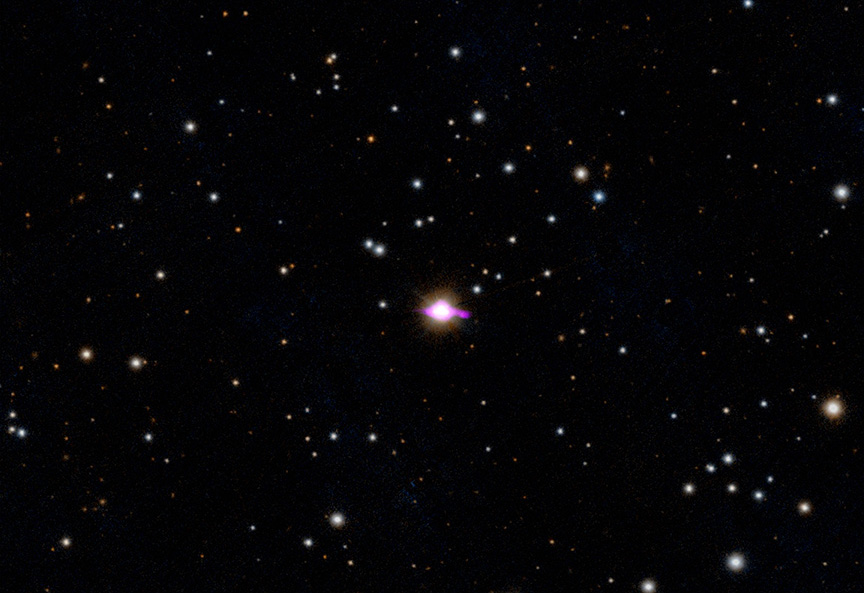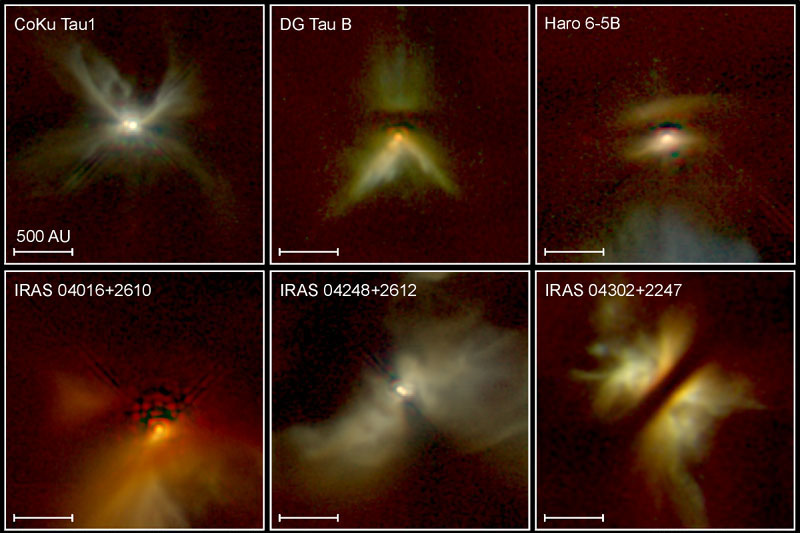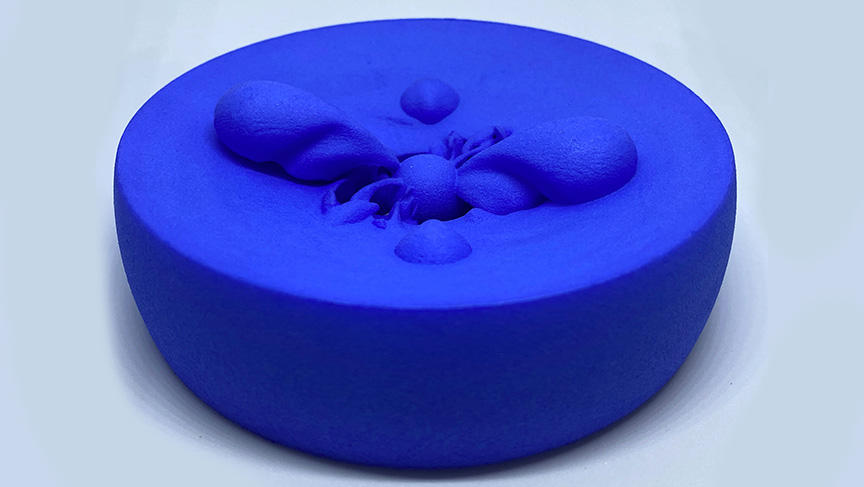
BP Tau in 3D
A Young Star's Dynamic Environment
Exploring the Early Stages of Stellar Evolution in 3D
BP Tau belongs to a class of very young, still-forming stars that are less than 10 million years old called “T Tauri” stars. These stars were called this because the first one astronomers discovered was in a cloud of dust and gas called the Taurus Molecular Cloud, which is located about 420 light-years from Earth. BP Tau is also found there.

BP Tau is a young star, less than 10 million years old compared to the 5 billion years for the age of our Sun. As with many stars its age, BP Tau is very active and prone to outbursts or flares. BP Tau is surrounded by a disk of material that may one day form planets (this is how the Earth and the rest of the Solar System form.) The flares from BP Tau can reach this disk, forming hot loops of extended atmosphere. By studying this interaction, astronomers get a better understanding of how young stars – and potentially planets – develop in these systems. Credit: X-ray: NASA/CXC/SAO; Optical: PanSTARRS; Image Processing: NASA/CXC/SAO/N. Wolk
Like other T Tauri stars, BP Tau has a disk around it where planets and other bodies may form one day. BP Tau is pulling material from this disk toward it and can funnel directly onto the star’s surface. This process not only powers energetic emissions in ultraviolet and X-ray wavelengths, but also drives the complex magnetic interactions shaping the star’s environment.
Magnetic Connections in Action
High-resolution observations from NASA’s Chandra X-ray Observatory have helped scientists uncover how stars like BP Tau interact with their disks in this early stage. Chandra has revealed bright X-ray flares near the surface of BP Tau—caused by explosive events known as magnetic reconnection. These events are similar to solar flares on our Sun, but much more extreme.
The star’s magnetic field lines stretch from the stellar surface out into the inner edges of the disk, forming magnetic loops filled with superheated plasma. These loops can rise thousands of kilometers above the star, then reconnect, releasing massive amounts of energy. This activity may influence the structure of the disk, help regulate accretion (the process of pulling material toward the star), and even play a role in shaping where planetary one day end up in orbit.
A Laboratory for Planet Formation
BP Tau is also of interest because it shows signs of disk winds—streams of gas flowing away from the protoplanetary disk. These winds, driven by magnetic and thermal forces, can help clear away material and determine how much mass ultimately ends up in the star versus the planets forming around it. Understanding these flows is crucial to building accurate models of planetary system formation.

This illustration shows an artistʻs view close to a potential giant, newborn planet near a T Tauri Star. Credit: Mark A. Garlick
By studying objects like BP Tau, astronomers get a look at how radiation and energetic particles affect planets in the process of forming. High-energy radiation can change the chemistry of molecules in the disk, for example. It can also damage atmospheres or alter planetary environments of young planets before they have a chance to fully form. Astronomers use BP Tau to see how these important processes – that likely happened in our own Solar System billions of years ago – take place.

This set of six images was captured in infrared light by NASA Hubble Space Telescope. Each object is about 450 light-years away in the constellation Taurus. The individual images show disks of dust encircling young stars, giving us a look at what may be the early formative stages of planetary systems. Credit: D. Padgett (IPAC/Caltech), W. Brandner (IPAC), K. Stapelfeldt (JPL) and NASA
BP Tau in 3D
This 3D printable model of BP Tau’s environment is based on renderings informed by multi-wavelength data, including X-ray imagery from Chandra. The model emphasizes the star-disk magnetic connection, showing how loops of plasma extend from the star to the inner edge of the disk, where accretion funnels deposit material onto the surface. The disk itself is warped and uneven, reflecting the dynamic and turbulent nature of these early stellar systems.
This 3D model shows a star less than 10 million years old that is surrounded by a disk of material. This class of objects is known as T Tauri stars, named after the first of its kind found in the Taurus star-forming region about 420 light-years from Earth many decades ago. The model describes the effects of multiple flares, or outbursts that are detected in X-rays by Chandra from one T Tauri star known as BP Tau. These flares interact with the disk of material and lead to the formation of an extended outer atmosphere composed by hot loops, connecting the disk to the developing star.
Credit: INAF-Osservatorio Astronomico di Palermo/Salvatore Orlando
For anyone curious about the universe, this model provides a hands-on way to explore how stars are born and how their environments are shaped by powerful forces. Feel the complex geometry of a star still in the making.
3D Printing BP Tau: Download the 3D Model

In the 3D print of BP Tau, the disk of material resembles a large hockey puck with round, ringed, concave surfaces. At the heart of the puck is a small orb: the developing star. Shooting out of the orb are long, thin strands: the flares. Also emerging from the orb are petal-shaped blobs: the loops of extended atmosphere.
(3D Print Credit: NASA/CXC/SAO/A. Jubett & N. Wolk, based on a model by S.Orlando)
These files are compatible with most 3D modeling software and printers.
Printing Recommendations
To create your own version of the young star BP Tau:
Printer Type: Suitable for FDM or SLA printers
Material: PLA recommended for standard prints; resin for high-detail models
Layer Height: 0.1 mm for best resolution
Supports: Required for overhanging elements such as magnetic loops or raised disk features
Infill: 20%
You may wish to print the disk and magnetic arcs in different colors or materials to highlight the structure’s components depending on your printer.
Learn More
BP Tau is one of several objects featured in our growing 3D print collection. Each model in this series is designed to bring space science off the screen and into your hands, combining real data with tactile design for an immersive experience.
Explore more models like BP Tau in our 3D Model Gallery
RESOURCES
DOWNLOADABLES
LINKS TO OTHER ACTIVITIES
Published: May 2025





